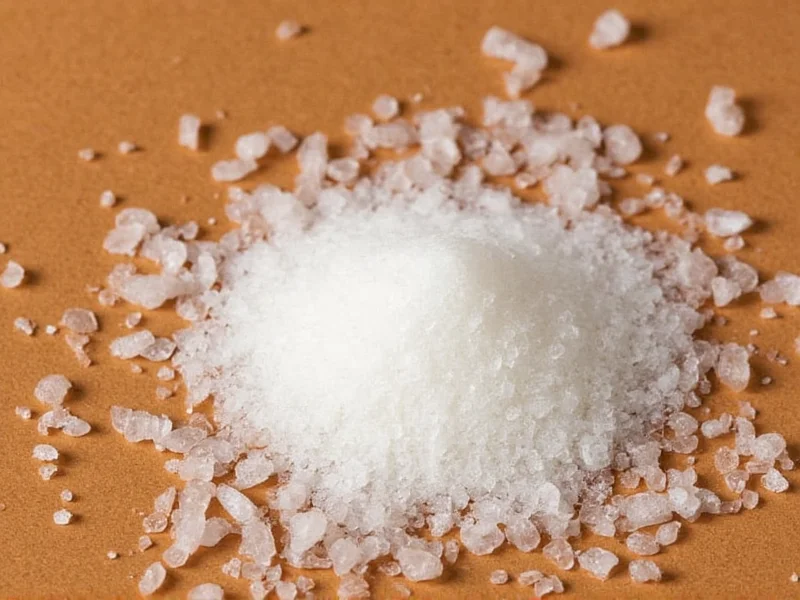Onion salt adds both savory onion flavor and seasoning to dishes, making it a staple in many kitchens. When you need a replacement for onion salt—whether due to dietary restrictions, unavailable ingredients, or specific recipe requirements—understanding the right substitutes ensures your dishes maintain their intended flavor profile. This guide provides practical, tested alternatives that work across various cooking applications from seasoning meats to enhancing soups and stews.
Understanding Onion Salt Composition
Before exploring replacements, it's essential to understand what makes onion salt unique. Onion salt combines dehydrated onion powder with table salt, typically in a 3:1 ratio. This dual-component nature means effective substitutes must address both the onion flavor element and the salt component. Many home cooks make the mistake of replacing onion salt with just onion powder, resulting in under-seasoned dishes. The reverse error—using only salt—loses the distinctive onion flavor that defines many recipes.
Top Replacement Options for Onion Salt
When searching for the best substitute for onion salt in recipes, consider these practical alternatives based on availability and specific cooking needs.
Onion Powder and Salt Combination
The most direct replacement for onion salt uses onion powder mixed with regular salt. This homemade onion salt replacement gives you complete control over sodium levels and flavor intensity. For low sodium diets, reduce the salt proportion while maintaining the onion flavor. The standard conversion is:
| Onion Salt Required | Onion Powder | Salt |
|---|---|---|
| 1 teaspoon | ¾ teaspoon | ¼ teaspoon |
| 1 tablespoon | 2¼ teaspoons | ¾ teaspoon |
| ¼ cup | 3 tablespoons | 1 tablespoon |
Fresh Onions
When you need to replace onion salt without onion powder, fresh onions work well but require adjustments. Use ½ cup finely minced yellow onion per 1 teaspoon of onion salt. Sauté the onions first to concentrate flavor and remove excess moisture. This onion salt alternative works best in cooked dishes like soups, stews, and casseroles where additional liquid won't affect texture. For every cup of fresh onions added, reduce other liquids in your recipe by 2-3 tablespoons.
Onion Flakes
Onion flakes provide a convenient replacement that rehydrates during cooking. Use a 2:1 ratio of onion flakes to salt (2 parts flakes to 1 part salt). These work particularly well in dry rubs and slow-cooked dishes where they have time to soften. For what to use instead of onion salt in chili, onion flakes add texture and visual appeal while delivering authentic onion flavor.
Shallots and Leeks
For more complex flavor profiles, shallots or leeks make excellent substitutes. Use 1:1 shallot-to-onion-salt ratio for delicate dishes like sauces and dressings. Leeks work well in heartier recipes—use the white and light green parts only, minced finely. These allium alternatives provide a milder, sweeter flavor that works particularly well in French and Mediterranean cuisine.
Specialized Substitution Guidelines
Different cooking scenarios require tailored approaches when replacing onion salt. Understanding these nuances helps you select the best substitute for specific applications.
For Low-Sodium Diets
Those managing kidney disease or hypertension need careful onion salt alternatives. Create a no-salt version using 1 teaspoon onion powder plus 1¼ teaspoons nutritional yeast for umami depth. For a more traditional flavor, use onion powder alone but increase other aromatics like garlic powder or celery seed to compensate for the missing salt dimension.
Dry Rubs and Seasoning Blends
When making dry rubs, maintain the dry texture by using dehydrated alternatives. The onion powder and salt combination works best here. For gluten-free onion salt replacement in spice blends, ensure your onion powder is certified gluten-free, as some commercial brands may contain additives.
Cooked Dishes vs. Finishing Applications
In long-cooked dishes like soups and stews, fresh onions work well as they have time to mellow. For finishing applications like salad dressings or dips, use onion powder for immediate flavor without texture. When substituting in recipes requiring instant flavor release, avoid fresh onion alternatives as they won't provide the same concentrated taste.
Common Substitution Mistakes to Avoid
Many home cooks make these errors when replacing onion salt:
- Ignoring the salt component - Using only onion powder creates under-seasoned dishes
- Overcompensating with liquid ingredients - Adding too much fresh onion alters recipe moisture balance
- Using raw onion in inappropriate applications - Raw onion chunks don't substitute well for the fine texture of onion salt
- Not adjusting for flavor intensity - Different onion varieties have varying potency levels
Practical Application Tips
When substituting in specific recipes:
- For chili - Use fresh onions sautéed with other aromatics; reduce broth by 2 tablespoons per cup of onions added
- For meat rubs - Stick with the onion powder and salt combination for proper adhesion
- For salad dressings - Opt for onion powder to avoid texture issues
- For baked goods - Use dehydrated options only to prevent moisture problems











 浙公网安备
33010002000092号
浙公网安备
33010002000092号 浙B2-20120091-4
浙B2-20120091-4